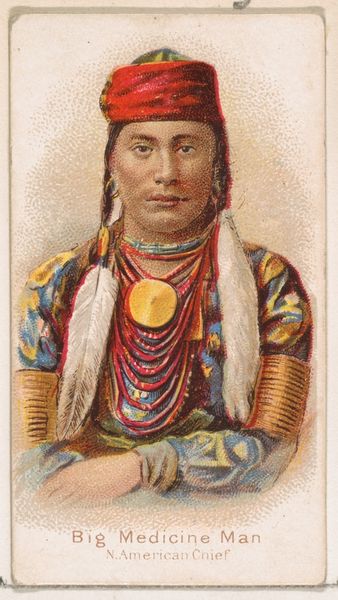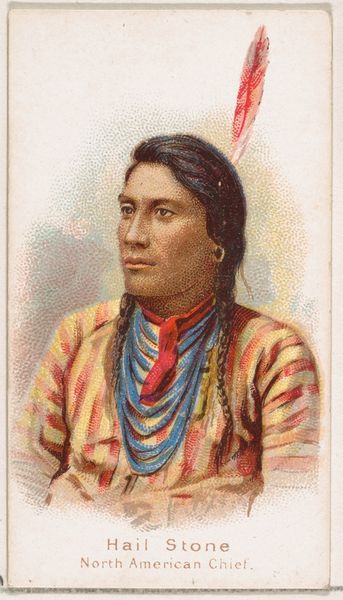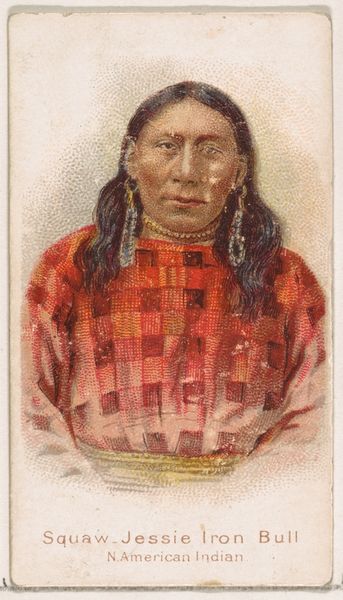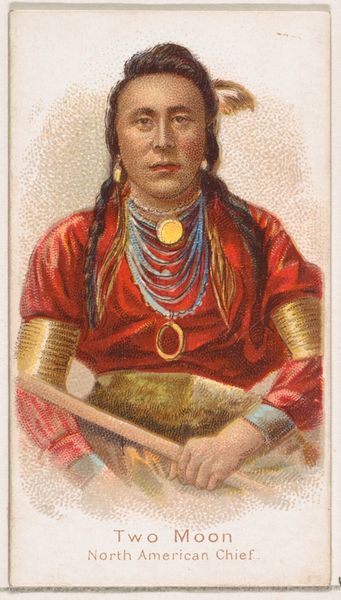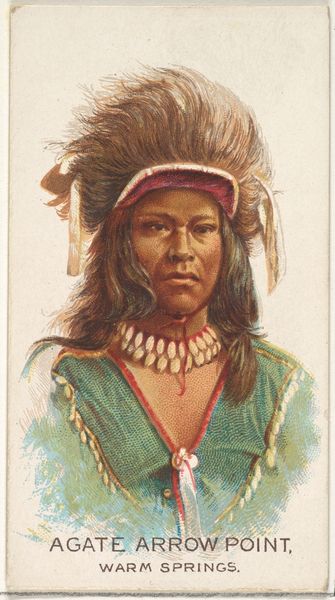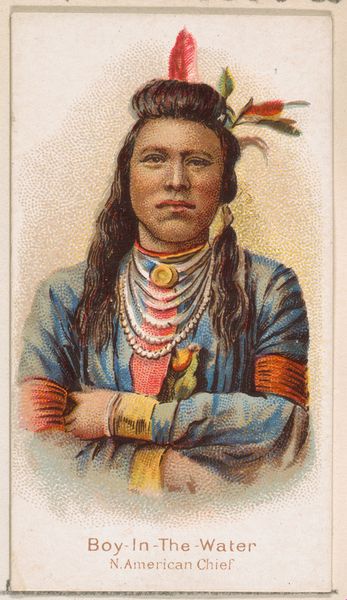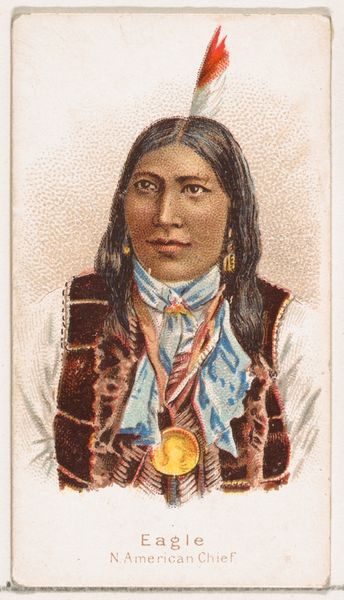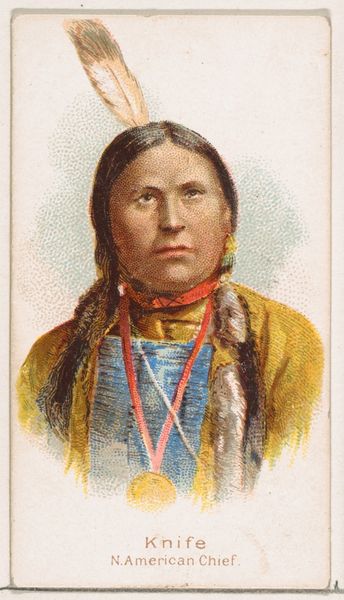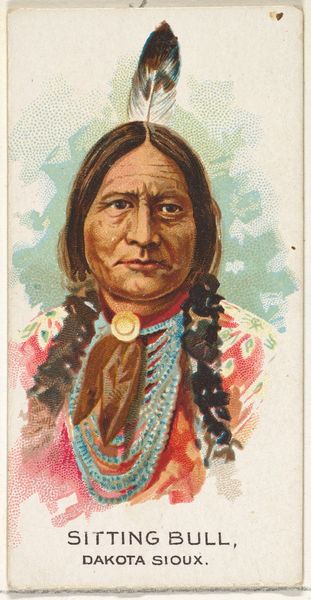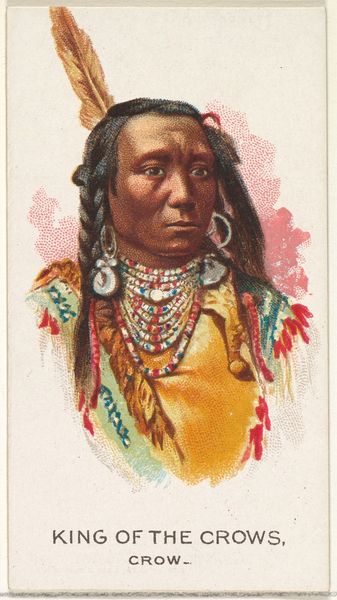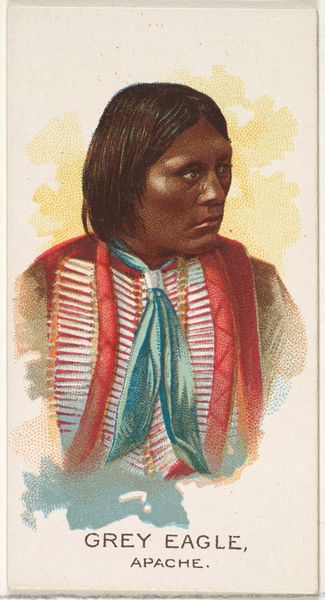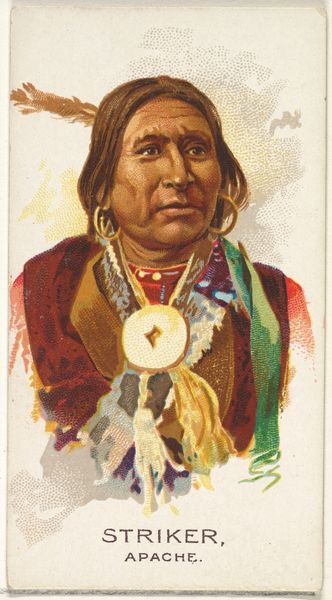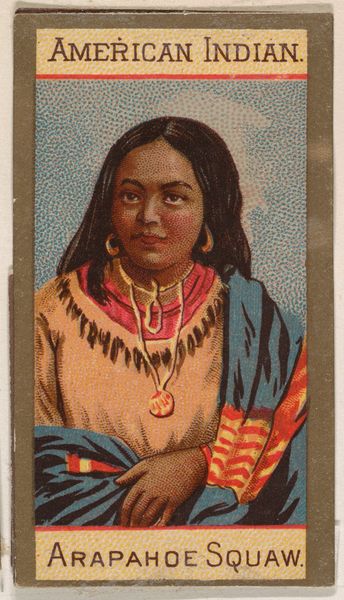
Little Head, North American Chief, from the Savage and Semi-Barbarous Chiefs and Rulers series (N189) issued by Wm. S. Kimball & Co. 1888
0:00
0:00
#
portrait
# print
Dimensions: Sheet: 2 11/16 × 1 1/2 in. (6.8 × 3.8 cm)
Copyright: Public Domain
This chromolithograph of Little Head, a North American chief, was part of a series issued by the Wm. S. Kimball & Company. The series aimed to depict "Savage and Semi-Barbarous Chiefs and Rulers," but it mainly reveals the biases of its time. These cards, distributed with tobacco products, circulated widely and shaped popular perceptions of different cultures. Note the visual codes: Little Head is adorned with traditional attire, but the image simplifies and exoticizes his identity. Made in the late 19th century, the card reflects America’s expansionist era and the government’s policies toward Native American tribes. The term "savage" reflects the era’s racial prejudices and the common justification used for dispossessing indigenous people of their lands. Understanding this image requires historical research into both the company that produced it and the cultural context in which it was received, drawing on sources in advertising history and Native American studies. By exploring these social and institutional contexts, we can better understand the politics of imagery and the public role of art in shaping cultural attitudes.
Comments
No comments
Be the first to comment and join the conversation on the ultimate creative platform.
